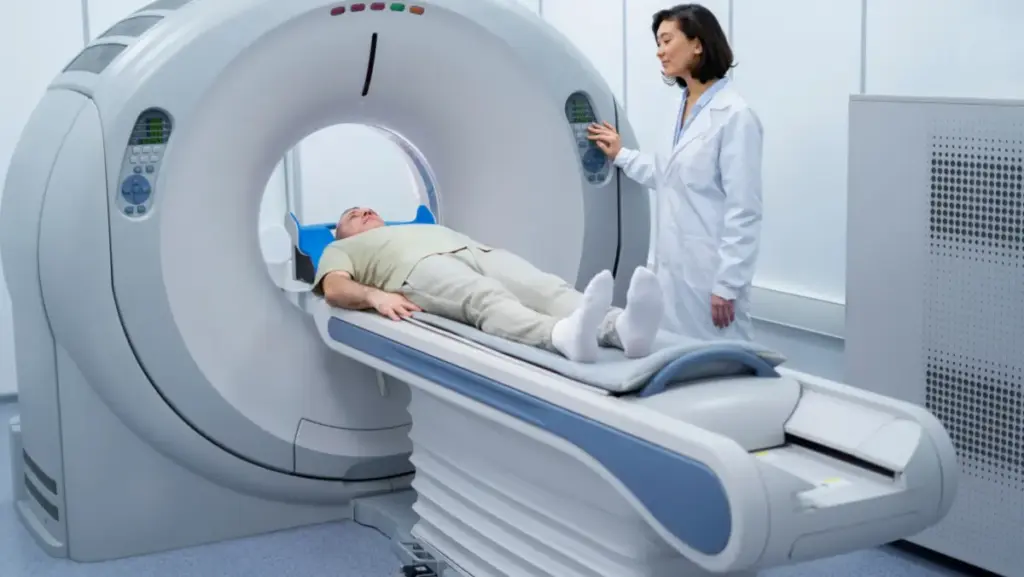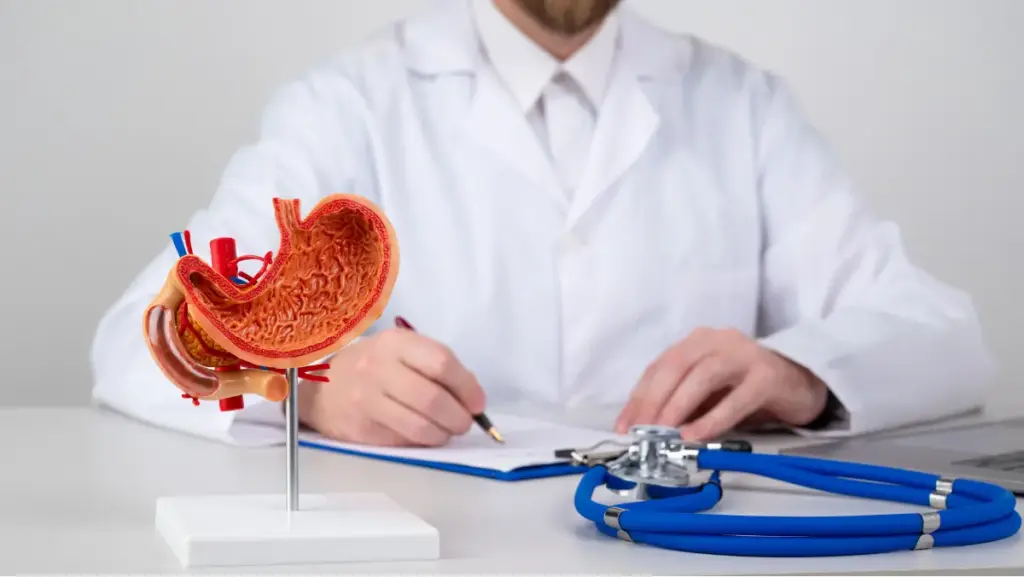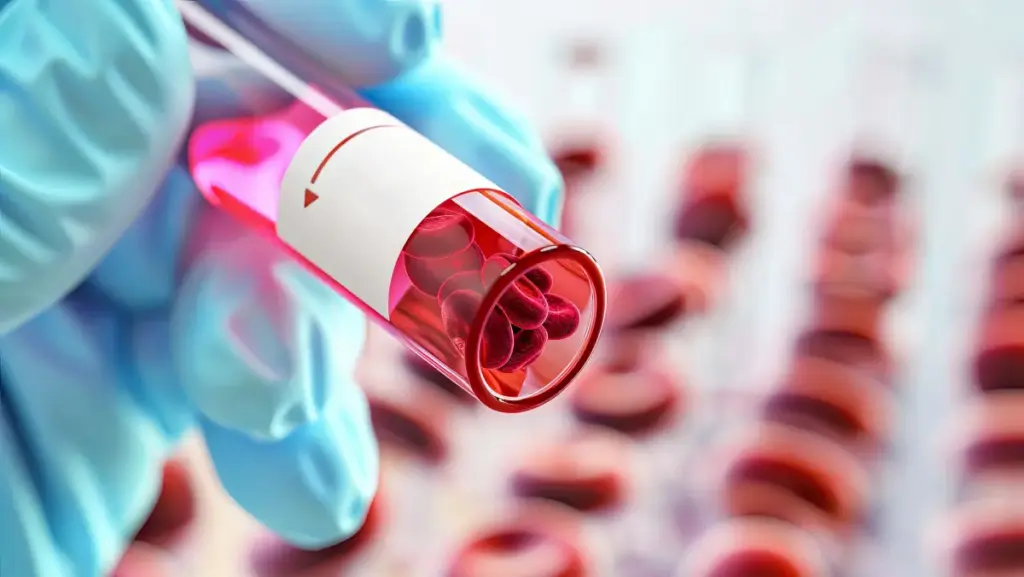
The hip is a vital joint in the human body, responsible for supporting the upper body’s weight and enabling movement in the lower limbs. Functioning as a ball-and-socket joint, it offers stability and a wide range of motion, allowing us to walk, run, sit, and bend with ease. With age, injury, or certain medical conditions, the hip can become compromised, leading to pain and reduced mobility. Conditions such as arthritis, fractures, and soft tissue injuries can severely affect quality of life. Timely diagnosis and medical intervention are essential to preserve joint function and manage symptoms effectively. In many cases, minimally invasive procedures and targeted rehabilitation strategies can restore mobility and reduce discomfort. Understanding the anatomy, common disorders, and treatment options associated with the hip can empower individuals to make informed health decisions and maintain an active lifestyle.
The hip is one of the body’s largest and most structurally secure joints. It connects the pelvis to the femur (thigh bone) through a ball-and-socket mechanism. The femoral head forms the ball, while the acetabulum, a section of the pelvic bone, serves as the socket. This arrangement permits multidirectional movement while bearing the body's weight.
Surrounding the joint are vital soft tissues such as ligaments, tendons, and cartilage, all working together to ensure stability and smooth movement. Cartilage cushions the joint surfaces to avoid bone-on-bone contact, while ligaments stabilize the bones and maintain proper alignment.
A healthy hip joint is essential for daily tasks like walking, climbing stairs, or even standing. Any damage to its structure can impair these basic movements and significantly affect overall mobility.
Hip bursitis and tendonitis are inflammatory conditions that affect the soft tissues around the hip joint. Bursitis refers to the inflammation of the bursa, a small fluid-filled sac that acts as a cushion between bones, tendons, and muscles around the joint. Tendonitis refers to inflammation of the tendons, usually caused by repetitive stress or overuse.
These conditions typically develop in active individuals or those with poor posture or improper movement mechanics. Aging can also contribute due to wear and tear of tissues. Symptoms often include localized pain, swelling, and tenderness, particularly when lying on the affected side or engaging in physical activity.
Treatment for bursitis and tendonitis generally begins with rest, anti-inflammatory medications, and physical therapy. Ice application and activity modification can also relieve symptoms. In persistent cases, corticosteroid injections or guided physiotherapy may be necessary. Early intervention helps prevent chronic inflammation and allows patients to return to normal function without the need for surgical management.
Hip fractures and dislocations are serious orthopedic injuries, frequently seen in older adults due to bone fragility caused by osteoporosis. A fracture typically involves a break in the upper femur, while a dislocation occurs when the femoral head is forced out of the socket.
These injuries often result from falls, motor vehicle accidents, or direct trauma. They are characterized by severe pain, inability to bear weight, and visible deformity in the hip region. Immediate medical attention is crucial to prevent complications such as blood vessel or nerve damage.
Treatment typically involves surgical intervention, either through internal fixation, partial hip replacement, or total hip arthroplasty, depending on the fracture's location and severity. For dislocations, reduction (realignment) under anesthesia is often performed. Rehabilitation after surgery plays a crucial role in restoring strength and improving mobility.
Prompt diagnosis and management significantly improve outcomes, particularly in elderly patients. Failure to treat these conditions quickly may result in long-term disability, blood clots, or joint deterioration, highlighting the importance of both surgical care and structured recovery.
Hip replacement surgery, or hip arthroplasty, is a medical procedure where a damaged hip joint is replaced with a prosthetic implant. It is typically performed in patients suffering from severe osteoarthritis, avascular necrosis, or significant joint damage due to trauma.
The goal is to relieve pain, restore function, and enhance mobility. The procedure involves removing the diseased bone and cartilage from the femoral head and acetabulum, followed by implantation of an artificial joint composed of metal, ceramic, or plastic materials.
Modern advancements allow for minimally invasive techniques that reduce hospital stays and promote faster recovery. Total hip replacement and partial hip replacement are two commonly used methods, selected based on patient age, activity level, and extent of damage.
With proper rehabilitation, most patients resume normal activity within a few months. While complications such as infection or dislocation exist, they are rare when performed by experienced orthopedic surgeons. Hip replacement surgery can significantly enhance the quality of life for those suffering from persistent hip pain.
A hip labral tear involves damage to the labrum—the cartilage ring that lines the rim of the hip socket. This structure plays a crucial role in stabilizing the joint and facilitating smooth movement of the femoral head within the acetabulum. Tears may result from injury, repetitive movements, anatomical irregularities, or wear-and-tear over time.
Athletes involved in high-impact sports or individuals with conditions like femoroacetabular impingement (FAI) are particularly susceptible. Symptoms may be subtle initially but tend to worsen over time if left untreated.
Diagnosis usually involves MRI with contrast to visualize the labrum. Conservative treatment includes rest, physical therapy, and pain management. In more severe cases, arthroscopic surgery may be necessary to repair or remove the torn portion.
Early identification is key to preventing further joint degeneration. Post-treatment rehabilitation focuses on strengthening the surrounding muscles and improving hip mechanics. Addressing labral tears promptly can prevent long-term complications such as osteoarthritis or chronic joint instability.
Successful recovery from hip surgery or injury heavily depends on comprehensive post-operative care and mobility management. The rehabilitation process is tailored to each patient’s procedure, overall health, and functional goals. Early mobilization is often encouraged to reduce the risk of complications such as deep vein thrombosis, pneumonia, or muscle atrophy.
Physical therapy is initiated within a day or two post-surgery and focuses on pain control, strength-building, and range-of-motion exercises. Gradual weight-bearing, assisted walking, and gait training are integral to regaining function.
Adaptive tools such as walkers, crutches, or raised toilet seats may be recommended initially to ensure safety and independence. Nutrition and hydration play a vital role in healing, while follow-up visits help assess progress and make necessary adjustments to the recovery plan.
A well-structured rehabilitation program enhances joint stability, minimizes the risk of re-injury, and allows a safe return to daily routines. Adherence to medical advice and regular assessments are crucial for achieving optimal outcomes in hip recovery.
The hip joint is central to human movement and mobility, playing a vital role in maintaining an active and pain-free life. From structural integrity to managing conditions such as bursitis, fractures, and labral tears, understanding the complexities of this joint is essential. Advances in surgical techniques like hip replacement and targeted post-operative care offer renewed hope for patients suffering from debilitating hip conditions. Timely intervention, accurate diagnosis, and commitment to recovery can significantly improve quality of life and long-term outcomes.
Kannappa Memorial Hospital remains a trusted destination for expert orthopedic care, offering precision treatment and individualized rehabilitation plans. With a focus on comprehensive patient care, state-of-the-art technology, and experienced medical professionals, individuals can regain strength, mobility, and confidence. Whether dealing with chronic pain or an acute injury, restoring hip health is not just about healing the joint—it’s about reclaiming independence and movement.
The hip is a vital joint in the human body, responsible for supporting the upper body’s weight and enabling movement in the lower limbs. Functioning as a ball-and-socket joint, it offers stability and a wide range of motion, allowing us to walk, run, sit, and bend with ease. With age, injury, or certain medical conditions, the hip can become compromised, leading to pain and reduced mobility. Conditions such as arthritis, fractures, and soft tissue injuries can severely affect quality of life. Timely diagnosis and medical intervention are essential to preserve joint function and manage symptoms effectively. In many cases, minimally invasive procedures and targeted rehabilitation strategies can restore mobility and reduce discomfort. Understanding the anatomy, common disorders, and treatment options associated with the hip can empower individuals to make informed health decisions and maintain an active lifestyle.
Hip Joint Structure
Hip Bursitis & Tendonitis
Hip Fractures & Dislocations
Hip Replacement Surgery
Hip Labral Tears
Post-Operative Care & Mobility
Conclusion
The hip is one of the body’s largest and most structurally secure joints. It connects the pelvis to the femur (thigh bone) through a ball-and-socket mechanism. The femoral head forms the ball, while the acetabulum, a section of the pelvic bone, serves as the socket. This arrangement permits multidirectional movement while bearing the body’s weight.
Surrounding the joint are vital soft tissues such as ligaments, tendons, and cartilage, all working together to ensure stability and smooth movement. Cartilage cushions the joint surfaces to avoid bone-on-bone contact, while ligaments stabilize the bones and maintain proper alignment.
A healthy hip joint is essential for daily tasks like walking, climbing stairs, or even standing. Any damage to its structure can impair these basic movements and significantly affect overall mobility.
Hip bursitis and tendonitis are inflammatory conditions that affect the soft tissues around the hip joint. Bursitis refers to the inflammation of the bursa, a small fluid-filled sac that acts as a cushion between bones, tendons, and muscles around the joint. Tendonitis refers to inflammation of the tendons, usually caused by repetitive stress or overuse.
These conditions typically develop in active individuals or those with poor posture or improper movement mechanics. Aging can also contribute due to wear and tear of tissues. Symptoms often include localized pain, swelling, and tenderness, particularly when lying on the affected side or engaging in physical activity.
Treatment for bursitis and tendonitis generally begins with rest, anti-inflammatory medications, and physical therapy. Ice application and activity modification can also relieve symptoms. In persistent cases, corticosteroid injections or guided physiotherapy may be necessary. Early intervention helps prevent chronic inflammation and allows patients to return to normal function without the need for surgical management.
Hip fractures and dislocations are serious orthopedic injuries, frequently seen in older adults due to bone fragility caused by osteoporosis. A fracture typically involves a break in the upper femur, while a dislocation occurs when the femoral head is forced out of the socket.
These injuries often result from falls, motor vehicle accidents, or direct trauma. They are characterized by severe pain, inability to bear weight, and visible deformity in the hip region. Immediate medical attention is crucial to prevent complications such as blood vessel or nerve damage.
Treatment typically involves surgical intervention, either through internal fixation, partial hip replacement, or total hip arthroplasty, depending on the fracture’s location and severity. For dislocations, reduction (realignment) under anesthesia is often performed. Rehabilitation after surgery plays a crucial role in restoring strength and improving mobility.
Prompt diagnosis and management significantly improve outcomes, particularly in elderly patients. Failure to treat these conditions quickly may result in long-term disability, blood clots, or joint deterioration, highlighting the importance of both surgical care and structured recovery.
Hip replacement surgery, or hip arthroplasty, is a medical procedure where a damaged hip joint is replaced with a prosthetic implant. It is typically performed in patients suffering from severe osteoarthritis, avascular necrosis, or significant joint damage due to trauma.
The goal is to relieve pain, restore function, and enhance mobility. The procedure involves removing the diseased bone and cartilage from the femoral head and acetabulum, followed by implantation of an artificial joint composed of metal, ceramic, or plastic materials.
Modern advancements allow for minimally invasive techniques that reduce hospital stays and promote faster recovery. Total hip replacement and partial hip replacement are two commonly used methods, selected based on patient age, activity level, and extent of damage.
With proper rehabilitation, most patients resume normal activity within a few months. While complications such as infection or dislocation exist, they are rare when performed by experienced orthopedic surgeons. Hip replacement surgery can significantly enhance the quality of life for those suffering from persistent hip pain.
A hip labral tear involves damage to the labrum—the cartilage ring that lines the rim of the hip socket. This structure plays a crucial role in stabilizing the joint and facilitating smooth movement of the femoral head within the acetabulum. Tears may result from injury, repetitive movements, anatomical irregularities, or wear-and-tear over time.
Athletes involved in high-impact sports or individuals with conditions like femoroacetabular impingement (FAI) are particularly susceptible. Symptoms may be subtle initially but tend to worsen over time if left untreated.
Diagnosis usually involves MRI with contrast to visualize the labrum. Conservative treatment includes rest, physical therapy, and pain management. In more severe cases, arthroscopic surgery may be necessary to repair or remove the torn portion.
Early identification is key to preventing further joint degeneration. Post-treatment rehabilitation focuses on strengthening the surrounding muscles and improving hip mechanics. Addressing labral tears promptly can prevent long-term complications such as osteoarthritis or chronic joint instability.
Successful recovery from hip surgery or injury heavily depends on comprehensive post-operative care and mobility management. The rehabilitation process is tailored to each patient’s procedure, overall health, and functional goals. Early mobilization is often encouraged to reduce the risk of complications such as deep vein thrombosis, pneumonia, or muscle atrophy.
Physical therapy is initiated within a day or two post-surgery and focuses on pain control, strength-building, and range-of-motion exercises. Gradual weight-bearing, assisted walking, and gait training are integral to regaining function.
Adaptive tools such as walkers, crutches, or raised toilet seats may be recommended initially to ensure safety and independence. Nutrition and hydration play a vital role in healing, while follow-up visits help assess progress and make necessary adjustments to the recovery plan.
A well-structured rehabilitation program enhances joint stability, minimizes the risk of re-injury, and allows a safe return to daily routines. Adherence to medical advice and regular assessments are crucial for achieving optimal outcomes in hip recovery.
The hip joint is central to human movement and mobility, playing a vital role in maintaining an active and pain-free life. From structural integrity to managing conditions such as bursitis, fractures, and labral tears, understanding the complexities of this joint is essential. Advances in surgical techniques like hip replacement and targeted post-operative care offer renewed hope for patients suffering from debilitating hip conditions. Timely intervention, accurate diagnosis, and commitment to recovery can significantly improve quality of life and long-term outcomes.
Kannappa Memorial Hospital remains a trusted destination for expert orthopedic care, offering precision treatment and individualized rehabilitation plans. With a focus on comprehensive patient care, state-of-the-art technology, and experienced medical professionals, individuals can regain strength, mobility, and confidence. Whether dealing with chronic pain or an acute injury, restoring hip health is not just about healing the joint—it’s about reclaiming independence and movement.






The hip refers to the area on each side of the pelvis where the thigh bone (femur) meets the socket of the pelvic bone (acetabulum). It is a ball-and-socket joint that allows fluid motion in multiple directions, enabling activities like sitting, walking, and running. The hip joint is surrounded by muscles, ligaments, and cartilage that contribute to its strength and flexibility.
Hip pain can stem from various causes including arthritis, bursitis, tendonitis, fractures, or soft tissue injuries. Overuse from sports, age-related degeneration, or traumatic events can also contribute. Sometimes, issues in the spine or knee may radiate pain to the hip area. Identifying the root cause is essential to develop an effective treatment plan and prevent chronic discomfort.
Yes, in many cases, walking helps improve hip joint mobility and strengthens surrounding muscles. However, it depends on the cause of the pain. For mild arthritis or stiffness, low-impact walking can relieve tension and enhance blood flow. But if the pain is due to a fracture or severe inflammation, walking may worsen symptoms and should be avoided until evaluated by a medical professional.
Copyright ©2025 Kannappa Memorial Hospital. All Rights Reserved
© Designed and Developed By Cloudstar Digital